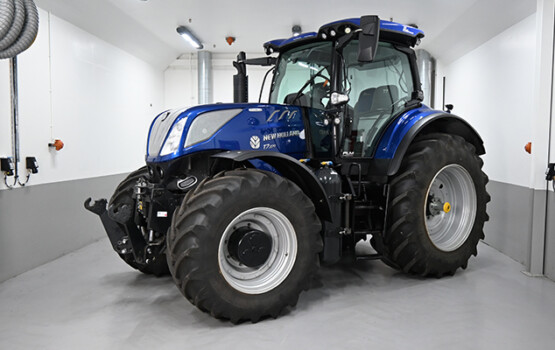Portal for more climate-friendly mobility
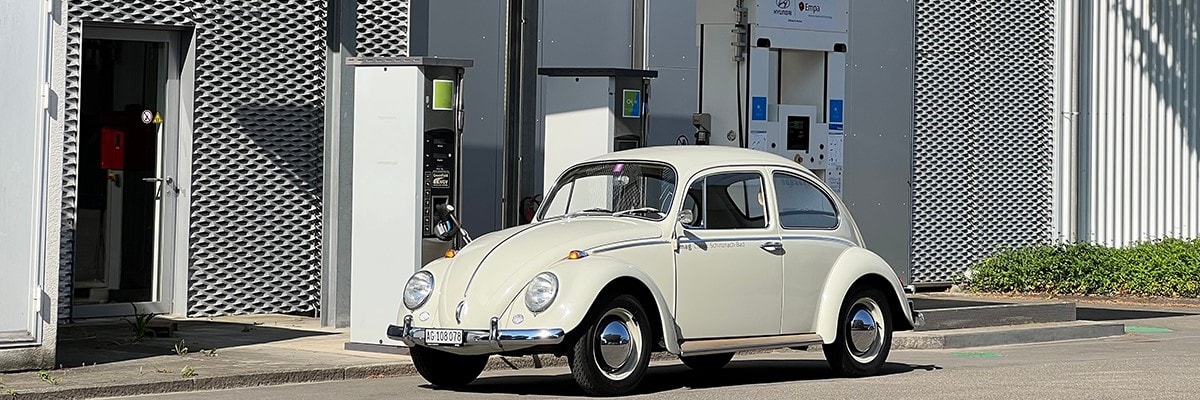
Combustion engine not on way out!
Björn Noack, Director of the Sustainable Mobility Strategy at German supplier Bosch, shows how the EU’s “Green Deal” can only make an extremely small contribution to the engine transition. He also underlines the important role played by e-fuels and biogas in relation to the existing fleet. In Switzerland, a series of tests on e-fuels for classic cars is now being launched.
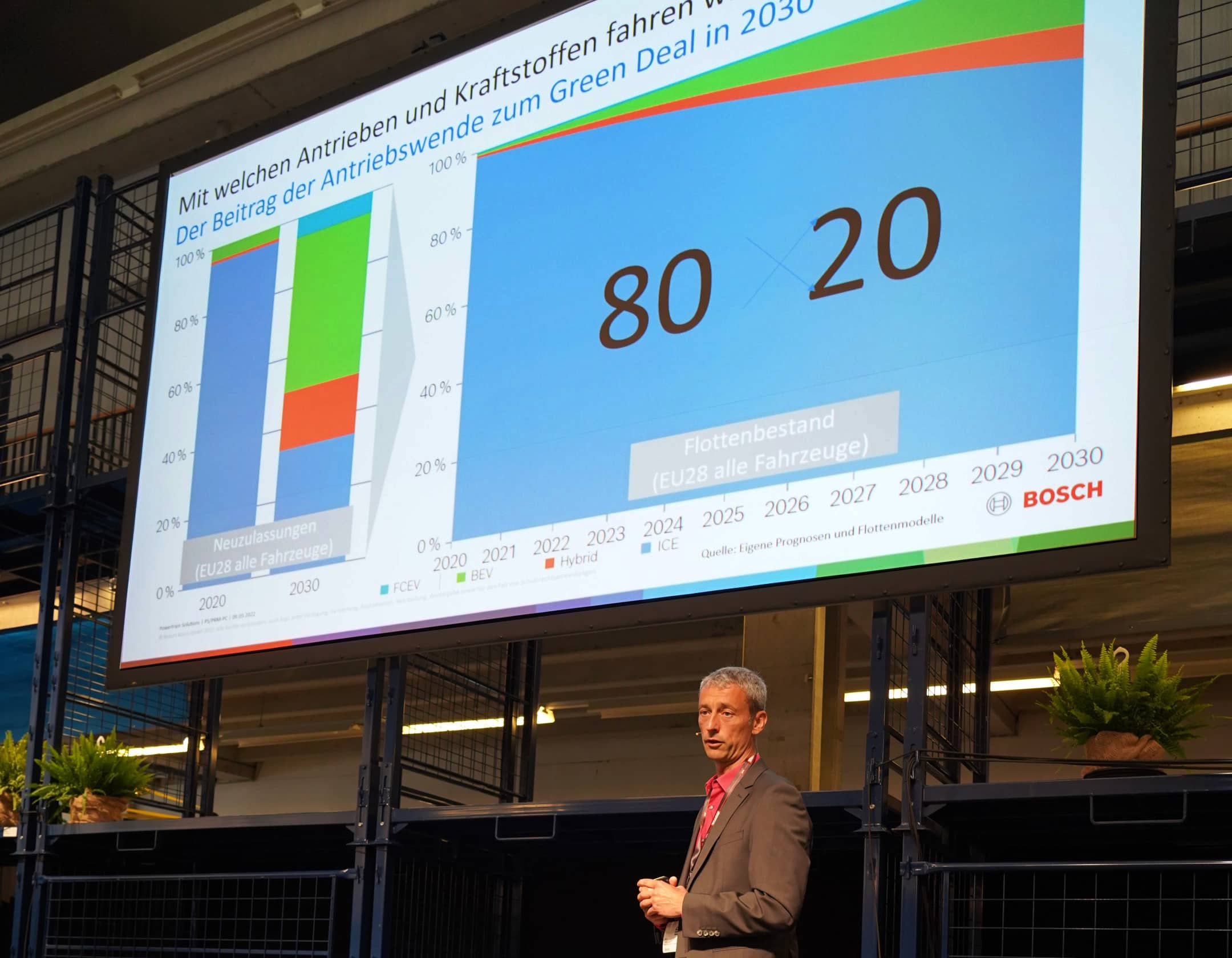 Bosch expert Björn Noack during his presentation at the Hostettler “Autotechnik Days”. Source: CNG-Mobility.ch
Bosch expert Björn Noack during his presentation at the Hostettler “Autotechnik Days”. Source: CNG-Mobility.ch
“We can’t say goodbye to combustion engines as quickly as politicians want. Even just because authorisation was granted for new combustion engines which were still being sold throughout Europe in 2020,” says Bosch expert Björn Noack. For the Director of the Sustainable Mobility Strategy at the German supplier, it is therefore all the more important to think in terms of scenarios and make further assumptions about charging infrastructure, emissions regulations, energy prices, battery costs, etc. He concludes: “Even based on the optimistic assumptions about e-mobility, half of new cars in 2030 will still be powered by a combustion engine – whether with a pure combustion engine or a hybrid,” says Noack.
It will therefore take many years before the existing fleet is converted to sustainable and alternative engines. The transformation in the engine segment has already begun, but it will not happen overnight. By 2030, 80% of the existing fleet will still be powered by a combustion engine. “So even if we now switch everything to green engines, we will only have cut CO2 emissions by 20% by 2030 – that’s all,” Noack calculates soberly.
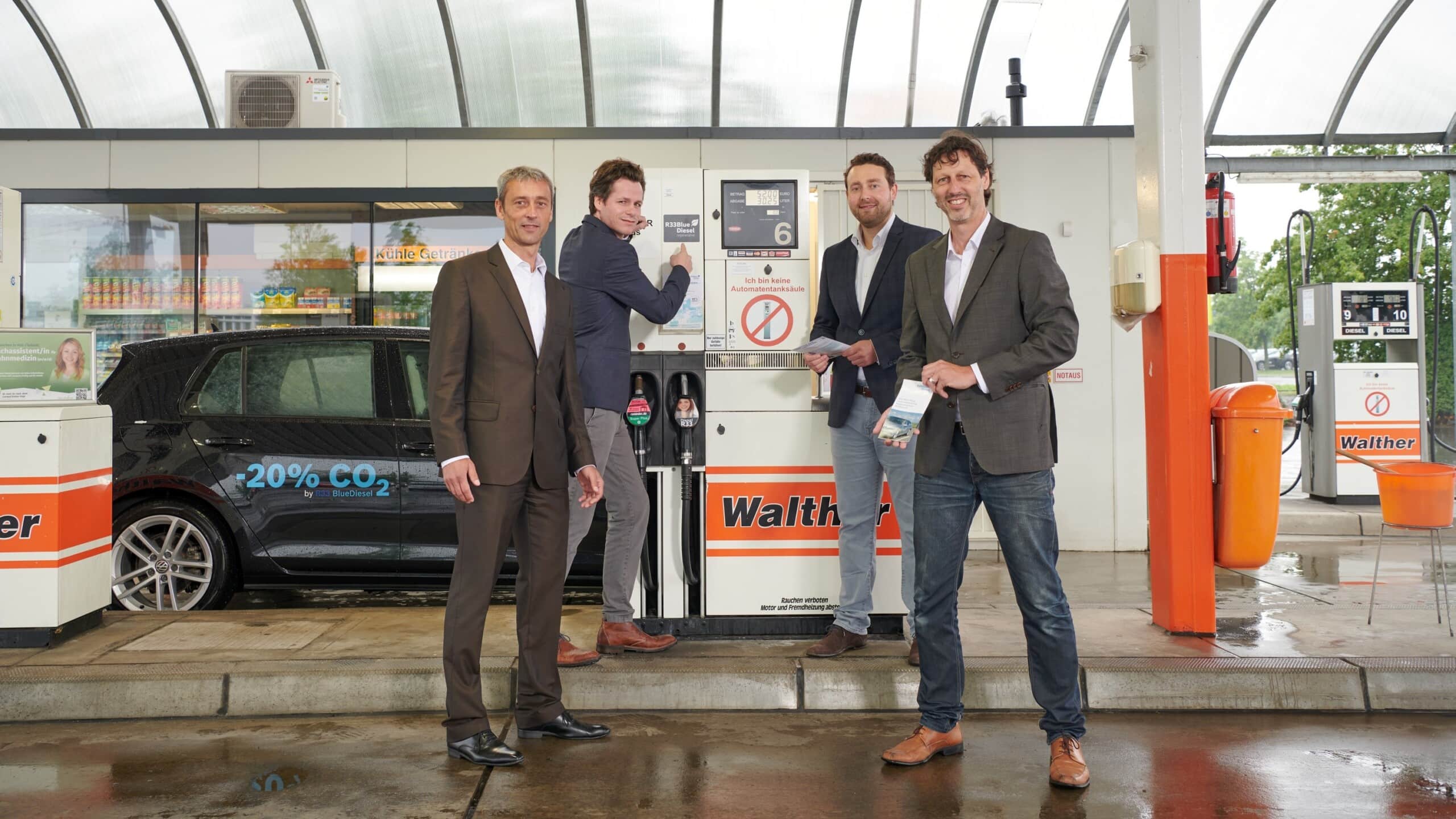 Björn Noack (left) advocates that e-fuels also be used by the EU as a valid path to decarbonization. Source: Bosch/DKV Mobility
Björn Noack (left) advocates that e-fuels also be used by the EU as a valid path to decarbonization. Source: Bosch/DKV Mobility
According to Bosch experts, the current EU climate change plan will therefore not achieve the stated objective. That’s why the German supplier is focusing not only on electromobility, but also on the development of biofuels. These make it possible to drive even combustion vehicles in a more environmentally friendly or even CO2-neutral way – just like the countless CNG vehicles thanks to biogas in the engine.
“Achieving our climate targets requires the full range of engine technologies,” says Björn Noack from Bosch. “We have to generate the electricity we need to charge our electric vehicles or the energy we need to produce hydrogen from renewable sources. Until then nothing will have been achieved in the fight against CO2 emissions!” In addition to the ongoing optimisation of internal combustion engines, it is therefore essential to promote biofuels and e-fuels in order to actually be able to cover the entire demand without fossil fuels.
 Quelle: Empa/Amag
Quelle: Empa/Amag
Synthetic fuel could enable both the existing fleet and even vintage cars to be driven in a CO2-friendly manner, thus contributing to the achievement of climate targets. This is even being examined separately at Empa as part of a current series of tests. “Theoretically, there is no reason why older cars could not be able to run on the new fuel over the long term.” However, without thorough clarification, the new fuel would hardly be used in the sometimes expensive treasures, warns Christian Bach, who was responsible for the tests.
Just like synthetic fuels, biogas is a renewable energy source that needs to be promoted. Biogas is produced by the fermentation of organic residues such as green waste or sewage sludge. And the same amount of CO2 would be produced if the biomass simply rotted unused. If, on the other hand, biogas is used to drive a car, it is a clever way to make combustion engines virtually CO2-neutral – regardless of whether they are a racy city car, a tractor, or a large CNG-powered truck. (pd/jas, 31 May 2022)
You might also be interested in
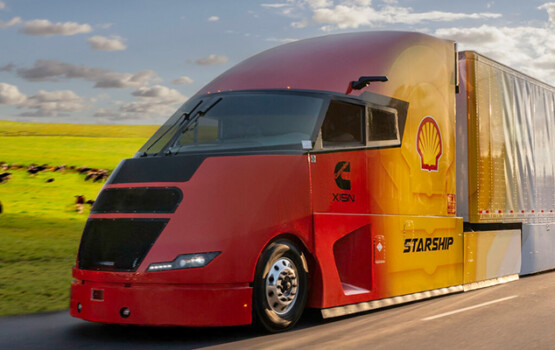
Shell Starship on record hunt
